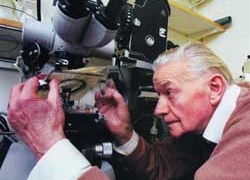A laser-like beam of light directed at a unique solid object has made this material nearly disappear. The effect occurs at infrared wavelengths, making it invisible to the naked eye.
However, Chris Phillips, a member of the research team and a physicist at the Royal Holloway University of London, stated: “If this effect were to occur at visible wavelengths for the molecules that make up your hand, then when this laser beam shines on it, your hand would become transparent.”
“And if you then enhance the laser beam a little more, the scenery seen through your hand would become brighter, thanks to the light amplification effect in the beam,” he added.
Phillips and his colleagues from the University of Neuchâtel in Switzerland believe that this method could one day be applied to visible light, leading to new technologies that could see through rubble while searching for disaster victims or observing organs in the body that are obscured by bones.
In a recent report published in Nature Materials, the scientists stated that they accomplished their feat using a material typically used to make semiconductor chips. Normally, the electrons in the atoms of this material interact with light beams in a mild manner.
However, Phillips and his colleagues rearranged the material so that it contained artificial atoms—crystals with a special structure that are only a few billionths of a meter long. Because these atoms are artificial, the scientists can adjust the behavior of the electrons, which exhibit wave-like properties, within them.
When the beam of light is directed at the material, it interacts with the wave state of the electrons inside the artificial atoms, causing them to cancel each other out and create a new type of material that is transparent and has properties that are half material and half wave.
The scientists continued to amplify the beam of light, even though 80% of the artificial atoms were in a low-excitation state. This contradicts a hypothesis proposed by Albert Einstein, which suggests that to amplify light in a laser beam, the majority of atoms must be in a high-excitation state.
“They have demonstrated that this effect can occur in a solid-state environment, which is a very important factor for practical applications,” commented Lene Vestergaard Hau, a professor of applied physics at Harvard University.
The next goal of the research team is to better control and amplify the light beam so that the effect of seeing through solid objects can be achieved without the need for a special structure.
T. An




















































